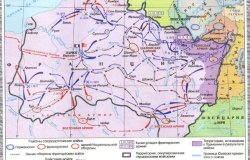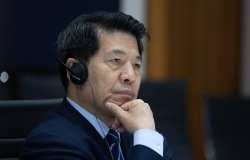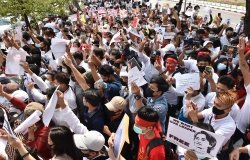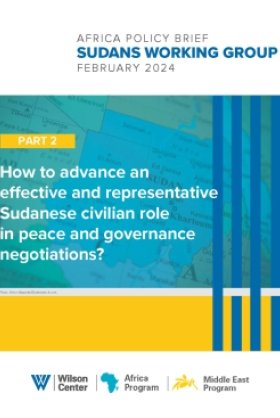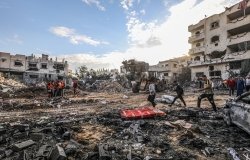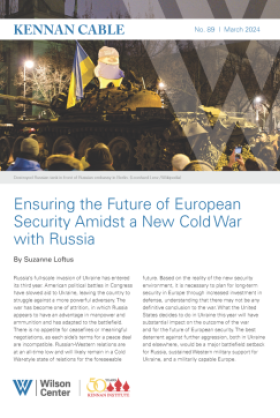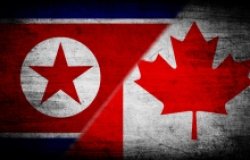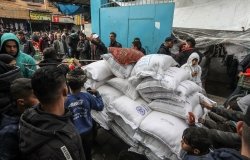Truth and Reconciliation Processes – A Global Assessment
The Woodrow Wilson International Center's Africa Program and Conflict Prevention Project invite you to a program on "Truth and Reconciliation Processes – A Global Assessment," featuring four distinguished analysts and practitioners. The panel will undertake a comparative assessment of strategies and institutions that have been developed in an attempt to address the always-difficult post-war reconstruction challenge of balancing the demands for justice and accountability with the imperatives of political reconciliation and accommodation.
Overview
This program was the second of a two-part series examining truth and reconciliation processes that have emerged in response to mass violence and atrocities. The first part, held at the Visions Theater the previous evening, centered on Rwanda's particular experience, using, as a discussion vehicle, Anne Aghion's new film that tracks the return to his community of a Rwandan Hutu believed to have been involved in the 1994 genocide. The Center's second program was directed to a consideration of truth and reconciliation processes globally, and featured panelists that had expertise in different regional areas.
Antoine Rutayisire addressed the Rwandan experience from his vantage point as the vice chairman of the Rwandan National Unity and Reconciliation Commission. Rutayisire noted that the Commission was actually conceived before the genocide, with three distinct functions:
1. to understand what had gone wrong over four decades of ethnic tension that preceded the genocide;
2. to develop and implement a national reconciliation strategy;
3. to continuously monitor the country's institutions, so as to prevent the reintroduction of divisive policies or practices.
Rutayisire observed that at the end of the genocide150,000 suspects were imprisoned. Over 800,000 persons had been killed in three months time, and there was a need to minimize revenge, to minimize societal trauma, and to reduce the fear of the population. But the judicial system had crumbled – with judges either dead, or in prison, or in exile. It would have taken 200 years to adjudicate through normal judicial processes all of those who had been imprisoned. Gacaca, a traditional community-based truth and reconciliation process, was therefore resurrected as a solution to an impossible situation. Designed to relieve the pressure on the judicial system, it combines the need for justice with the need for reconciliation.
Rutayisire identified these objectives of the gacaca system: to find the truth as to what happened; to accelerate the pace of hearings for those still in prison; to eradicate the culture of impunity; to achieve reconciliation and justice; and to build confidence among Rwandans in themselves. According to Rutayisire, most of the reaction to gacaca among Rwandans has been positive; however, he added, there has been some criticism of the program: some fear that its informal nature will trivialize the crime of genocide; some are concerned that since the majority of Rwandans are Hutu, gacaca will never uncover the truth; there is a fear that judges would be easily corrupted; and, finally, there is concern that prisoners will make confessions just to get out of the prison. Rutayisire suggests that, to combat these criticisms, there is a need (1) for an intense sensitization effort, both for the population and for those administering gacaca; (2) for a more aggressive campaign of trauma-healing by the Ministry of Health, churches and NGOs; and (3) for truth and reconciliation education for prisoners. In addition, compensation is required for the victims of the genocide – and this will require outside assistance.
The South African panelist, John Daniel, noted that several factors contributed to the success of his country's Truth and Reconciliation Commission. Particularly notable, Daniel, suggested, was its architecture: it combined three instruments of transitional justice: truth-extracting investigations; reparations for victims; and "earned" amnesty in lieu of blanket amnesty for perpetrators. According to Daniel, these three elements allowed the entire society to buy into the idea of truth and reconciliation while allowing a voice to the voiceless and the possibility of redemption to the guilty. Daniel reported that the Truth and Reconciliation Commission yielded 22,000 victim statements and 8,000 amnesty applications. The Commission's work led to the solution of many heinous crimes that might otherwise have gone unsolved. The Commission was also legitimized through several factors: broad consultations and a deliberative legislative process, highly qualified leadership, a fully public and transparent process, fair and even-handed implementation, and a strong legal reach.
Daniel's judgment is that the South African Truth and Reconciliation Commission succeeded in three important respects. First, it established an official public record of the apartheid era's crimes and political violence. Second, by its revelations of horror after horror perpetrated by apartheid enforcers, it has reduced the threat posed by right-wing para-military elements. Third, it did advance reconciliation: ten years later South Africa is more at peace with itself and the political consciousness of the white minority is vastly different.
Daniel observed that there were some internal debates about T and R procedures and strategy, with some wishing that there had been more emphasis on the truth-seeking function. The Chairman, in particular, was more focused on the reconciliation objective. Therefore, the Commission's powers of search and seizure were not fully utilized.
Margaret Popkin described the evolution of truth and reconciliation processes in Latin America, some emerging after civil war, others the result of human rights atrocities perpetrated by authoritarian regimes. In the case of El Salvador, Popkin observed, the Commission was comprised exclusively of international staff. It took nine months to deal with a twelve-year conflict. The condition of its justice system made a call for justice impractical, so it simply called for the removal of certain public officials who were identified with human rights abuses. Even that injunction was ignored: one person identified with atrocities ran for the presidency. The end-result was some truth, but no accountability for perpetrators.
Popkin observed that the subsequent successful example of South Africa, together with a recognition of the mistakes that had been made with earlier efforts in Latin America, led ultimately to truth and reconciliation commissions in Guatemala and Peru that were characterized by more effective public hearings and a stronger sense of citizen ownership. Thus, in Guatemala the Truth and Reconciliation Commission - comprised both of national and international members - produced a well-documented report that had a profound effect on the families of the victims. However, the implementation of the Commission's recommendations -- such as a national reparations plan -- has been difficult. Peru's Commission had exclusively national members and most closely followed the South African model, using extensive public hearings and recognizing the importance both of justice for perpetrators and reparations for victims.
Neil Kritz commented on the differences and similarities of several Truth and Reconciliation Commissions established over the past two decades and reflected on the reasons for their success or failure. Truth and Reconciliation Commissions, Kritz observed, are a response to complex issues for which there are no simple solutions. One of the most important aspects of a Truth Commission is that its strategy encompass all of the socio-economic and political characteristics of the society at hand. The unique complexities of each society can seriously impact the feasibility of certain options. Kritz added that Truth Commissions must work to reject notions of collective blame and guilt; ease the trauma of victims by distinguishing actual perpetrators; and, most importantly, find the truth and preserve evidence. Truth Commissions, he observed, are not the end of the reconciliation process but the beginning.
Additional observations made by the panelists in response to questions from the audience included the following:
· Daniel and Rutayisire commented on the significant involvement of women in their countries' truth and reconciliation processes. In Rwanda, Rutayisire noted, many of the men either perished during the genocide or are in prison, leaving women as the dominant voices in the truth and reconciliation process. Also, the new Rwandan Constitution requires that 50% of decision-making positions be filled by women. In South Africa, Daniel suggested, women witnesses came forward because they were more comfortable with public displays of very intense emotion and, since women are often the household managers, they may have been more focused on the reparations dimension of the proceedings.
· Kritz observed that local ownership of a truth and reconciliation process is critical to its success. According to Kritz, truth commissions, retrospectively, have found more success when the international community was less involved in the process.
Nicole Rumeau, Program Associate, (202) 691-4097
Howard Wolpe, Program Director
Hosted By

Africa Program
The Africa Program works to address the most critical issues facing Africa and US-Africa relations, build mutually beneficial US-Africa relations, and enhance knowledge and understanding about Africa in the United States. The Program achieves its mission through in-depth research and analyses, public discussion, working groups, and briefings that bring together policymakers, practitioners, and subject matter experts to analyze and offer practical options for tackling key challenges in Africa and in US-Africa relations. Read more
Thank you for your interest in this event. Please send any feedback or questions to our Events staff.
